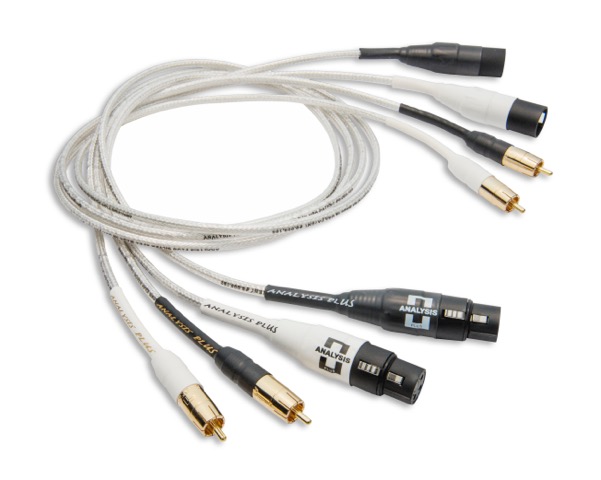| ||||||||||||||||||||
|
FULLRANGE REVIEW 레퍼런스 인터케이블의 이정표아날리시스 플러스 Silver Apex
케이블 과학의 결정체
▲ 미국의 대표 기타리스트 겸 싱어송라이터, 존 메이어가 인터뷰에서 아날리시스플러스 케이블에 대해 언급했다. 우리 시대를 대표하는 싱어송라이터이자 기타리스트 그리고 프로듀서 존 메이어. 그가 한 인터뷰에서 케이블에 대해 언급한 내용은 흥미롭다. 수년동안 자신은 “케이블은 케이블일 뿐”이라고 생각하다가 아날리시스 플러스를 만나면서 생각이 바뀌었다는 얘기다. 하이엔드 오디오 마니아가 아니더라도 이 케이블을 통해 소리의 차이를 확실히 느낄 수 있다고 엄지손가락을 치켜들었다. 물론 프로 뮤지션, 그 중에서도 무려 일곱 차례 그래미 어워즈를 수상했고 그 외 수많은 음악 상을 휩쓴 그의 말이라면 이런 언급은 사뭇 의미심장하다. 권위에 호소하는 말처럼 들릴지 모르겠지만 이런 호평은 수십 년 삶을 음악에 바친 여러 유명 뮤지션 및 엔지니어로부터 들을 수 있다. 그 이유는 다른 무엇도 아닌 성능이다. 아날리시스 플러스는 여타 하이엔드 케이블처럼 굵고 단단한 모습으로 오디오파일을 압도하지도 않으며 요란한 만듦새의 단자를 채용하지도 않는다. 최근 하이엔드 케이블에 비하면 상대적으로 얇은 편에 속하며 단자는 아주 기본적인 디자인을 취하고 있다. 하지만 그들의 설계 기법 및 화이트 페이퍼 등 연구결과를 보면 왜 이런 디자인이 탄생했는지 알 수 있다. 아날리시스 플러스는 케이블에서 일어나는 스킨 이펙트를 해소하고 저역에서 고역까지 정직한 주파수 신호 전송을 위해 할로우 오발(Hollow Oval)이라는 형태의 도체를 개발해 전대역에 걸친 전송 효율을 극대화했다. 이 외에도 낮고 균질한 임피던스 특성 유지 및 풍부한 하모닉스 정보 전송 등에 있어 독보적인 기술을 기반으로 케이블을 제작해왔다. 아날리시스 플러스의 과학적인 케이블 연구와 제조 공법은 단지 홈 오디오라는 작은 시장에만 국한되지 않았다. 프로 엔지니어 및 뮤지션들이 사용하는 케이블 등 전 방위에 걸쳐 제작되어 공급된다. 이런 역량을 가질 수 있었던 데에는 항공우주, 자동차, 의료기기 등 정밀 기기 설계 전반에 걸친 그들의 백그라운드에서 나온다. 에어버스, 아메리칸 쿨링 시스템, 보잉 그리고 미 항공 우주국 나사에 이르기까지 등 이름만 대면 알만한 첨단 기업들이 그들의 클라이언트다. 아날리시스는 태생부터 보편적 홈 오디오 메이커와 선을 긋고 케이블 과학을 실현하고 있다. Silver Apex
▲ Analysisplus Silver Apex Interconnector 아날리시스 플러스는 현재까지 실버 오발 도체 구조를 사용해 여러 케이블을 만들어왔다. 그리고 케이블 성능에 대해 대단한 호평을 받아왔다. 하이엔드 케이블의 특별한 버릇이나 개성은 유보하되 진짜 진실한 사운드가 어떤 것인지 오디오파일에게 케이블로서 증명해주었다. 할로우 오발 구조는 UAS 특허 등록(#6,005,193)을 받는 기술로서 보편적인 원형 케이블이 4kHz 이상 주파수 대역에서 신호 파형이 일관적이지 않음을 방지하는 것이 첫 번째 목적이었고 이는 과학적으로 이미 증명되었다. 이로서 고역 특성이 향상되었으며 더불어 주파수 전송 구역이 확장되는 등 여러 부가적인 효과를 얻었다. Silver Apex 또한 기존 할로우 오발 형태 도체를 사용했다. 간단히 해석하면 텅 빈 타원형 도체를 사용한다. 실제로 할로우 오발 도체를 사용하는 아날리시스 플러스 케이블의 단면을 살펴보면 보편적인 케이블과 달리 넓적한 타원형 도체 안에 텅빈 공간이 타원형을 유지하고 있는 특이한 모습을 볼 수 있다. 그리고 도체 외부엔 절연을 위해 테플론이 감싸고 있으며 차폐제가 여러 겹으로 케이블을 감싸고 있는 모습을 볼 수 있다. 
▲ Analysisplus Silver Apex Interconnector 내부 모습 
▲ Analysisplus Silver Apex 스피커케이블 하지만 Silver Apex에서는 이런 구조를 활용하되 한 발자국 더 나아갔다. 기본적으로 은선을 사용한 Silver Apex로서 은선을 활용해 할로우 오발 형태로 도체를 만든 것은 당연하다. 그런데 할로우 오발 구조 은선이 총 세 겹에 걸쳐 겹겹이 반복된 구조다. 일반적으로 할로우 오발 도체 하나를 사용한 것과 차원을 달리하는 구조다. 일단 물량 공세가 세 배며 이 외에 절연과 차폐 등에 대해서도 세 배 물량이 투입된다. 하지만 이런 구조는 단지 물량의 문제가 아니다. 대단히 얇은 할로우 구조를 단단히 그리고 균질적으로 유지해야하며 어떤 스트레스도 주지 않을 수 있는 지오메트리 구성이 중요하다. 하지만 실제 내 손에 들어온 Silver Apex는 상당히 얇다. 과거 반덴헐 등 몇 가지 유명 케이블을 끊어서 내부를 보면 무척 가는 두께에 비해 굉장히 얇은 은선이 숱하게 터져나와 놀랐던 기억이 있다. 아마도 Silver Apex도 마찬가지일 듯한데 그럼에도 불구하고 선재 자체는 가늘면서도 부드러워 3중 할로우 오발 구조라고는 상상하기 힘들 정도다. 터미네이션은 아날리시스 플러스가 특주한 뉴트릭 XLR 커넥터를 사용하고 있다. 이 정도 가격대라면 자체 제작한 XLR 커넥터를 사용할 법도 하지만 아날리시스 플러스는 여전히 뉴트릭을 고수한다. 사실 우리가 알고 있는 유명 하이엔드 케이블도 외부에 드러난 부분만 따로 제작하고 실질적인 내부 핀 섹션은 뉴트릭을 사용하는 경우가 많다. 뉴트릭 자체의 기본 성능이 매우 준수하기 때문이리다. 참고로 아날리시스 플러스에서는 이 단자를 Abbatron이라고 명시하고 있다. 
셋업 & 리스닝 테스트사용 기기
※ 위 유튜브영상은 리뷰의 이해를 돕기 위한 참고영상이며 실제 리뷰어가 사용한 음원과는 차이가 있습니다. 총평
거시적 관점에서 보면 케이블에 대한 과도한 투자보다는 기기 자체의 역량에 기대는 것이 맞다. 그러나 시스템의 기본적인 완성단계에 이르면 미시적 관점에서 접근하게 되며 케이블 의존도가 높아지게 된다. 바로 이 지점에서 가격 대비 성능 같은 논점은 어느 순간 무의미해지며 잘못하면 되돌릴 수 없는 혼돈의 세계로 빠진다. 이런 부분은 실제 오랫동안 자신의 독립적인 주거공간에서 때론 온 정신을 쏟아서 때론 그냥 편한 BGM으로 오랫동안 시스템 사운드를 내면화한, 진지한 오디오파일만 읽어낼 수 있는 사운드의 결이다. 아날리시스 플러스가 많은 하이파이 케이블 중에서도 뚜렷한 미덕을 가질 수 있는 이유는 어떤 시스템에서도 자기 역할을 90% 이상 해내기 때문이다. 자칫 혼돈으로 빠질 수 있는 케이블의 미시적 튜닝과정에서 단단한 중심을 잡아줄 수 있는 레퍼런스다. 문제는 가격이다. 이제 막 케이블 입문을 지나 미들급을 사용하기 시작한 단계에서 Silver Apex의 가격표는 사악하게 비춰질 수 있다. 그러나 수백 만원대 레퍼런스 케이블을 두루 사용해본 사람이라면 Silver Apex의 가격대는 되레 매력적일 수 있다. 여러 경우의 수를 생각해볼 때 은선 중 이런 퀄리티를 보장하는 케이블을 만나기란 절대 쉽지 않다. Silver Apex는 흔히 발견하기 힘든 레퍼런스 인터의 새로운 이정표로 자리매김할 것이다. Importer & Price
|
2017년 아날리시스플러스 은선재 최고급 라인입니다
입고 되어 시연중입니다 들어보고 구매하세요
새로운 실버 에이펙스는 최고의 실버 케이블입니다. 중공 타원형 케이블 안에 중공 타원형 케이블 안에 중공 타원형 케이블이있는 가장 진보 된 구조로되어있어 잡음 플로어 용 이중 차폐 형 디자인으로 암 호흡 소리가 들리지 않습니다. 특허받은 중공 타원형 구조로 짠, 무산소 구리의 안정화 스트랜드 위에 순수한은으로 제작되었습니다. 이러한 상호 연결은 소스의 고주파 구성 요소를 유지합니다

전세계 음악뮤지션이 사용하는 검증받은 케이블입니다
새로운 신상품 은을 100% 사용한 매우 정밀한 제품의 탄생 직접 시스템에 사용하고 구매하세요

Details
I’ve been using Analysis Plus speaker cables and interconnects in my reference system for many years now, but was a bit shocked when I realized that it had been more than ten years since I’d last reviewed and bought anything from them. In 2007, when I reviewed the newly introduced Black Oval 9 speaker cables and Micro Copper Oval-In interconnects, I noted that Analysis Plus had not substantially revised the designs of any of their cables in the roughly ten years since they’d been introduced. Now, another eleven years later, the bulk of their cable designs remain essentially unchanged. But as I also said in 2007, Analysis Plus has stated that they believe in producing well-built, properly engineered cables whose high quality is “scientifically verifiable” through measurements.
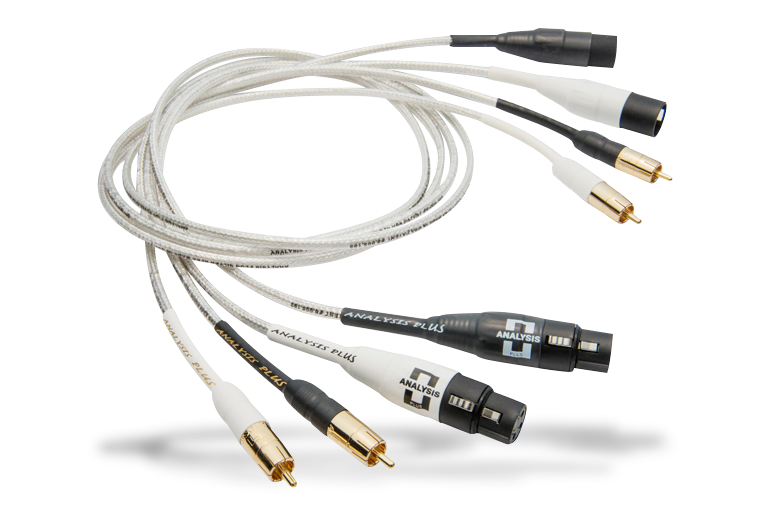
That’s why, when I recently contacted Analysis Plus’s president, engineer Mark Markel, to buy some reasonably priced balanced interconnects to integrate a new two-channel preamplifier into my reference multichannel system, I was surprised to learn that he’d just introduced new top models of speaker cable and interconnect using an entirely new cable geometry. So in addition to buying the inexpensive interconnects for my preamp, I also requested a pair of Analysis Plus’s new Silver Apex balanced interconnects and speaker cables for review.
Design inception
Each Silver Apex comprises three nested tubes that Markel describes as “a hollow oval inside a hollow oval inside a hollow oval.” Other Analysis Plus cables have hollow oval conductors laid side by side or stacked atop each other, and Markel says that the complexity of this new geometry makes their manufacture a challenge. The Silver Apexes cost more than Analysis’s other Silver models, the Silver Oval and Big Silver Oval (the latter available only as a speaker cable): the Silver Apex speaker cables cost \$1750 USD per 4’ pair terminated with Analysis Plus T1 spades or BFA banana plugs; the Silver Apex interconnect starts at \$766/0.5m pair. On the speaker cables, WBT 0681 spades or 0601 locking banana plugs can be substituted for an additional \$400. The interconnect price includes termination with nonlocking RCA or Abbatron XLR connectors. The Neutrik XLRs that AP previously used are heavier and seem more solid, but the Abbatrons have beryllium-copper sockets and trillium copper pins that are claimed to have very high conductivity.
The conductors are made of silver-over-copper wire -- the same as are used in AP’s other Silver-model cables -- and are woven into a tube with oval cross section. The innermost spacer maintaining this shape is made of Mylar; between each pair of nested conductors, dielectrics of Teflon (interconnect) and polyurethane (speaker cable) are used to achieve the desired impedance. AP claims that this geometry provides more uniform current distribution than do conventional conductors with solid round or even solid rectangular cross sections.
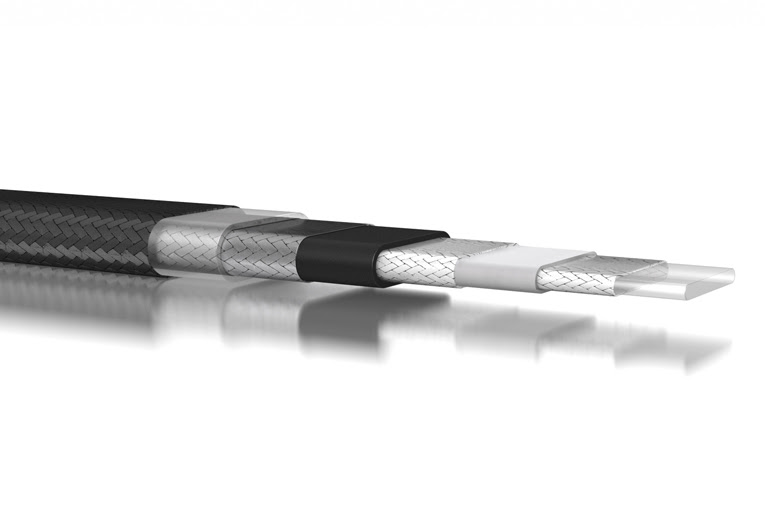
Analysis Plus designs all of its cables using computer simulations, measurements, and listening tests. You can read about their claims for their products in the white papers and other documents posted on their website. I can’t comment on those claims -- my understanding of electrical engineering and physics is limited -- but AP has posted oscilloscope waveforms of signals that have passed through cables made by AP and some of their competitors, the latter showing considerably more alteration to the waveforms.
Analysis Plus makes its products by hand in their facility in Flushing, Michigan. The Silver Apexes seemed sturdy and well constructed, but they aren’t what I’d call attractive. The finishing of the shrink-wrap and the look and feel of the outer jackets weren’t as luxurious as those of the premium cables from such companies as Crystal Cable, Siltech, or Nordost, but those cables cost considerably more. However, for cables costing \$766 and \$1750/pair, I would like to have seen a bit more attention paid to appearance. That said, the Silver Apexes were flexible, very functional, and easy to use, with a solid feel.
Setup
I used the Analysis Plus Silver Apex interconnects and speaker cables mostly with my reference components: an Anthem D2 A/V processor and Anthem M1 mono amplifiers. I also used an Oppo UDP-205 4K Ultra HD universal BD player as a DAC and preamp with a NuPrime Audio MCH-K38 power amplifier. Both electronics rigs were connected to my reference MartinLogan Masterpiece Classic ESL 9 speakers. An AudioQuest Carbon USB link connected the Oppo to my laptop, which ran Roon and foobar2000 for music playback. Connection to the Anthem D2 was via an Analysis Plus Digital Oval cable and Bel Canto Design mLink USB converter. Power cords and power conditioning were provided by Blue Circle Audio, ESP, and ZeroSurge products.
Layers of performance
The Silver Apex interconnects with Abbatron XLRs and Silver Apex speaker cables with WBT 0601 banana plugs replaced my longtime reference Solo Crystal Oval balanced interconnects (\$451/0.5m pair) and Black Oval 9 speaker cables (\$465/4’ pair). I let the new cables burn in for a couple of weeks with occasional casual listening before doing any critical evaluation. The sound of the new Silver Apexes was bracing and powerful right from the start, while remaining relaxed and highly refined. There were noticeable improvements in nearly every aspect of my system’s performance.
In A-ha’s MTV Unplugged: Summer Solstice (BD, 24-bit/96kHz Stereo LPCM, Universal), lead singer Morten Harket’s falsetto in “Take On Me” isn’t as pronounced as it had been 32 years earlier, in the version of this song on the band’s first album, Hunting High and Low (1985) -- but the intimate acoustic arrangement and Harket’s mature, measured singing are still dazzling in their purity in this performance, recorded in concert in 2017 at a small club in Giske, Norway. The gently plucked guitar appears almost entirely at the right side of the soundstage, but every note sounded crystal clear. The piano sound is slightly more dispersed but sounded very natural, and gave me an uncanny sense of the hall’s dimensions as its sounds wove in around the other instruments and provided a neutral backing to frame the sometimes soaring vocals. Harket’s singing may not be as lithe as it once was, but his affecting delivery of the words, with just a slight sorrowful quaver in his voice, hung delicately in the space between my speakers and stayed with me long after the song was over. If you haven’t heard this amazingly good acoustic version of this guilty pleasure from the 1980s, seek it out. The 16-bit/44.1kHz audio-only version sounds almost as good as the high-resolution audio track on the BD.
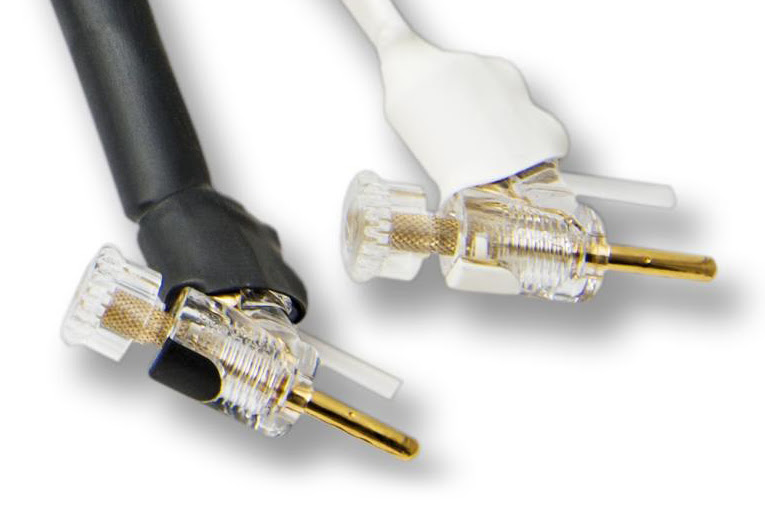
The Silver Apexes did a spectacular job of reproducing every minute detail in this stripped-down version of “Take On Me,” but they were equally impressive with the more complex arrangement of “The Sun Always Shines on TV.” The sparkling sound of Magne Furuholmen’s piano in his introduction was spread widely across the stage, with long sustains that segued perfectly into the smooth, robust singing of guest Ingrid Helene Håvik. It was a perfect balance of male and female voices at the forefront, surrounded by guitars, piano, and strings, each precisely delineated yet flawlessly integrated into the whole by the AP cables.
The title track of Neko Case’s Hell-On (24/48 FLAC, Anti-/Tidal), another and the latest praiseworthy album from this Grammy nominee, is an audiophile showcase that opens with lively percussion bouncing back and forth across the soundstage. There was a striking clarity to the sounds of the bells, and the proximate quality of the voices, recorded with little sense of space. The sound immediately involved me. “Halls of Sarah” has a more reverberant sound, with a gently strummed guitar exuding a warm, welcoming quality. The vocals here were just as present as in “Hell-On,” but now with a sultry, breathy quality that put me in a total state of bliss as I let the music wash over me, marveling at the coherence and liquidity of the sound.
With the new AP cables, I was able to better enjoy such intricacies of Hell-On (2018), and easily differentiate it from the more constrained sound of Case’s Fox Confessor Brings the Flood, from 2006 (16/44.1 FLAC, Anti-/Epitaph), in which instruments are more closely grouped toward the center of the soundstage, and the vocals sound flatter and more like cutouts. But even with Fox Confessor, the Silver Apexes’ immaculately clean sound clearly separated voices from instruments, which in turn were quite distinct from one another. The ultraquiet, transparent sound of the Silver Apex cables let me hear nuances in both of these recordings.
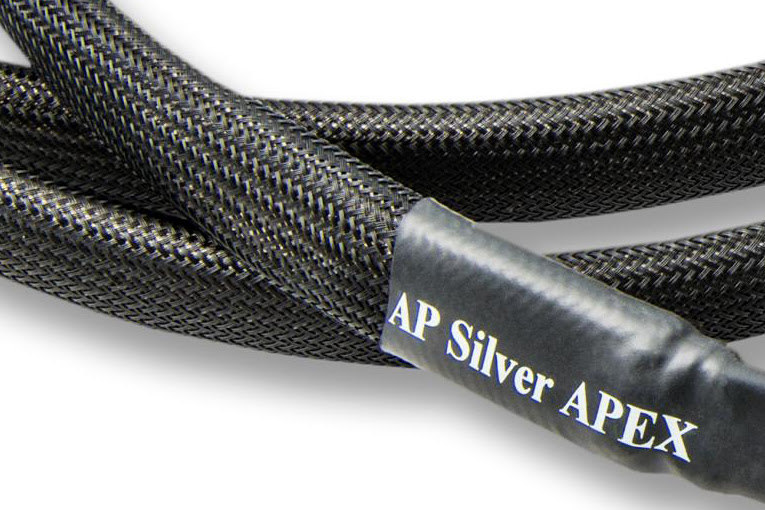
No one will ever accuse my reference MartinLogan Masterpiece Classic ESL 9s of being gentle or forgiving speakers: Their incisive sound is extremely revealing of other components in the signal chain. With the Silver Apex cables, the pizzicato of the Balkan cello duo 2Cellos (Luka Šulić and Stjepan Hauser) at the beginning of Mark Vincent’s cover of Magnetic Fields’ “The Book of Love,” from Vincent’s The Quartet Sessions (16/44.1 FLAC, Sony/Tidal), filled the front of my room with the simple but beautiful melody. Each pluck was distinguished from the sound of the cellist’s fingers moving over the strings, the rustling of the player’s clothes, and the instrument’s clean, well-defined harmonics. Vincent’s warm tenor voice was placed palpably at the front of the soundstage, supersmooth and intoxicating. When he reached the height of the final crescendo, it was amazingly loud and invigorating, with no hint of harshness. The incredible power of which the human voice is capable was clearly evident, but the sound remained clear, without deterioration, as Vincent held his notes with authority.
When I replaced the Silver Apexes with the Solo Crystal Oval interconnects and Black Oval 9 speaker cables, 2Cellos’ playing and Vincent’s singing still sounded excellent, but lost some of the absolute effortlessness they’d had through the more expensive AP wires. The complex harmonics of the bowed cellos now sounded a bit homogenized, and the climax of Vincent’s crescendo was slightly forced and not as smooth. The same was true of Diana Krall’s cover of Joni Mitchell’s “A Case of You,” from Krall’s Live in Paris(16/44.1 FLAC, Universal) -- the image size and the sense of space around the piano shrank slightly through the Ovals. And when Krall hit her vocal peaks, they weren’t as clearly articulated as they’d been through the Silver Apexes -- notes now blended slightly into each other.
Replacing just one of the cables, interconnect or speaker cable, had a similar effect to what I heard when I swapped out both, but to a lesser degree. There was a slight lessening of the sense of space around instruments with high-quality acoustic recordings. The differences were more pronounced at very high levels: the combination of Silver Apex interconnects and speaker cables always did a better job of sorting out the various elements in recordings, with no loss of clarity.
Aptly named
When I learned the prices of the Analysis Plus Silver Apex cables -- considerably more than my reference Solo Crystal Oval interconnects and Black Oval 9 reference cables, also from AP -- I was skeptical. I doubted I’d hear enough improvement in the sound to justify my buying them, considering that I was already quite happy with the performance of my references -- and I didn’t know if I’d hear any improvement at all.
Value is subjective, but I can say that the Silver Apexes worked worthwhile improvements in the sound of my system. The overall greater feeling of ease and incredible refinement of sound with the Silver Apexes let music flow freely from my system, regardless of what I played. Whether it was their ability to extract every last detail at low listening levels, or to keep things totally clean and poised at very high levels, my system has never sounded better.
Some may find it difficult to justify the prices of these cables. While they are indeed premium prices for cables, there’s no doubt in my mind that these are cables of premium sound quality. You could spend even more on cables from some other manufacturers, but in my system, Analysis Plus’s Silver Apexes provided absolutely stellar sound.
. . . Roger Kanno
rogerk@soundstagenetwork.com
Associated Equipment
- Speakers -- MartinLogan Masterpiece Classic ESL 9
- Amplifiers -- Anthem M1 (monos), NuPrime Audio MCH-K38
- A/V processor -- Anthem D2
- Sources -- Hewlett-Packard Pavilion computer running Windows 10, foobar2000, and Roon; AudioQuest JitterBug; Oppo UDP-205 4K Ultra HD universal BD player
- USB link -- AudioQuest Carbon
- Speaker cables -- Analysis Plus Black Oval 9
- Interconnects -- Analysis Plus Solo Crystal Oval
- Power cords -- Essential Sound Products MusicCord-Pro ES
- Power conditioners -- Blue Circle Audio PLC Thingee FX-2 with X0e low-frequency filter module, Zero Surge 1MOD15WI
 | ||||||||||
|

